Travelling by plane can be an exhilarating experience, promising new adventures and unforgettable memories. However, for individuals with mobility challenges who rely on wheelchairs, the journey through airports and onto planes can often be fraught with obstacles and uncertainties. Fortunately, with the advent of accessible facilities and thoughtful services, the process of boarding a plane has become more inclusive and accommodating for wheelchair users.
One such indispensable aid is the aisle wheelchair with a quick release rear wheel, designed to ease the boarding process and ensure a seamless transition from the airport terminal to the aircraft cabin. In this article, we will explore the invaluable assistance provided by aisle wheelchairs, shedding light on the empowering experience of wheelchair users as they embark on their air travel journey.
What is An Aisle Wheelchair and How Does It Work?
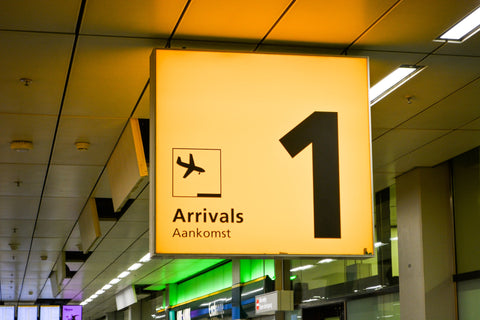
An aisle wheelchair, also known as an onboard wheelchair or transfer wheelchair, is a specialised mobility aid designed to facilitate the boarding and deboarding process for passengers with reduced mobility or those who use wheelchairs. Unlike other mobility products that are available on the market today its uniquely designed wheelchairs are used within the tight confines of an aircraft cabin, where standard wheelchairs cannot fit due to narrow aisles and confined spaces.
The aisle wheelchair is typically lightweight and compact, featuring a narrow width that allows it to manoeuvre through the tight spaces between rows of seats on the plane. It is equipped with small wheels, making it easy to navigate within the limited aisle space without causing any inconvenience to other passengers or damage to the aircraft.
The usage of an aisle wheelchair is a collaborative effort involving the passenger, airline staff, and sometimes fellow travellers. When a passenger with reduced mobility needs to board the plane, airline personnel bring the aisle wheelchair to the boarding gate. The passenger then transfers from their personal wheelchair to the aisle wheelchair with the assistance of trained airline staff. This transfer is usually done with the help of transfer boards or using techniques that prioritise the comfort and safety of the passenger.
Once seated in the aisle wheelchair, the passenger is gently wheeled to their assigned seat by airline personnel. During this process, the staff ensures that the passenger is securely fastened and comfortable. Upon reaching the designated seat, the passenger transfers back to their personal wheelchair or to the aircraft seat, depending on their needs and preferences.
Similarly, when it's time to deboard the plane, the process is reversed. Airline staff assists the passenger in transferring to the aisle wheelchair, and they are safely wheeled out of the aircraft to the boarding gate or connecting facility.
The aisle wheelchair plays a crucial role in enhancing accessibility for passengers with reduced mobility, enabling them to experience air travel with greater comfort and independence. Its design and purpose reflect the commitment of airlines and the aviation industry to create a more inclusive and accommodating environment for all passengers, regardless of their mobility challenges.
The Role of Aisle Wheelchairs: Enhancing Accessibility in Air Travel
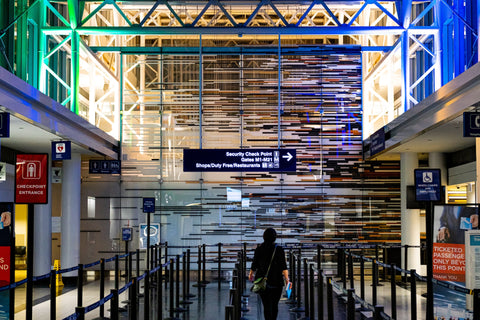
Air travel has become an integral part of modern life, connecting people across the globe for business, leisure, and personal reasons. However, for individuals with reduced mobility or those who rely on wheelchairs, navigating the complexities of air travel can present significant challenges. Airports and aircraft cabins are often designed with standard passengers in mind, making it difficult for wheelchair users to access certain areas and move comfortably within confined spaces. This is where aisle wheelchairs play a pivotal role in enhancing accessibility and ensuring that individuals with mobility challenges can experience air travel with greater ease and independence.
- Boarding and Deboarding Assistance: One of the primary functions of aisle wheelchairs is to assist passengers with reduced mobility during the boarding and deboarding processes. Standard wheelchairs are often too wide to navigate the narrow aisles of the aircraft cabin. Aisle wheelchairs, on the other hand, are specifically designed to fit within the tight spaces between rows of seats, allowing for smooth and efficient movement through the cabin. This ensures that wheelchair users can access their seats and move to their designated areas with the help of trained airline staff, without any inconvenience to other passengers.
- Collaborative Efforts: The use of aisle wheelchairs is a collaborative effort that involves coordination between the passengers, airline staff, and sometimes fellow travellers. When a passenger with reduced mobility arrives at the boarding gate, airline personnel bring the aisle wheelchair to assist with the boarding process. The passenger then transfers from their personal wheelchair to the aisle wheelchair with the help of airline staff, who are trained to ensure a safe and comfortable transfer.
- Increased Independence: Aisle wheelchairs offer a sense of independence and dignity to passengers with reduced mobility. Instead of relying solely on airline personnel to carry them to their seats, wheelchair users can actively participate in the boarding process. The aisle wheelchair allows them to move through the cabin with relative ease, giving them more control over their travel experience.
- Inclusive Air Travel: The availability of aisle wheelchairs promotes a more inclusive air travel environment. It ensures that individuals with reduced mobility can partake in the same travel opportunities as other passengers, without facing undue barriers or limitations. Aisle wheelchairs, combined with other accessible facilities and services provided by airports and airlines, contribute to creating a more accommodating and equal travel experience for everyone.
- Safety Considerations:Aisle wheelchairs are designed with safety in mind. They are lightweight, sturdy, and equipped with features that prevent them from causing damage to the aircraft or inconveniencing other passengers. Additionally, airline personnel receive specialised training to handle the aisle wheelchair and assist passengers with reduced mobility appropriately and safely.
- Positive Impact on Passengers: The use of aisle wheelchairs can significantly reduce the stress and anxiety experienced by passengers with reduced mobility during the boarding and deboarding process. By providing a seamless and smooth transition from the terminal to the aircraft cabin and vice versa, aisle wheelchairs contribute to a more pleasant and enjoyable travel experience.
The adoption of aisle wheelchairs, along with other accessible measures, reflects the commitment of the aviation industry to create a more inclusive and welcoming travel environment for all individuals, regardless of their physical abilities.
Navigating Airport Terminals: How Aisle Wheelchairs Facilitate Boarding
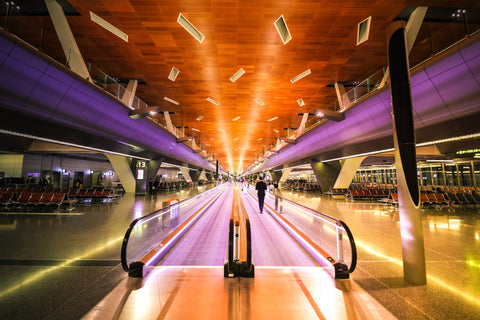
Navigating airport terminals can be a daunting task for passengers with reduced mobility or those who use wheelchairs. The bustling and expansive nature of airports can present numerous challenges, including long distances between gates, crowded waiting areas, and navigating through security checkpoints. However, the availability of aisle wheelchairs has significantly facilitated the boarding process for such passengers, making air travel more accessible and seamless.
- Accessible Check-In and Security: Aisle wheelchairs are often provided by airlines and airports to assist passengers with reduced mobility from the moment they arrive at the terminal. Airport personnel are trained to identify travellers who may benefit from using an aisle wheelchair and offer their assistance. This early support ensures that passengers can easily navigate check-in counters and security checkpoints, avoiding long queues and potential discomfort.
- Efficient Boarding Process:Boarding an aircraft is a critical stage where the use of aisle wheelchairs is particularly valuable. Instead of manoeuvring their personal wheelchairs through the narrow aisles of the aircraft, passengers with reduced mobility can transfer to an aisle wheelchair at the boarding gate. This allows them to be comfortably wheeled to their seats by airline staff, ensuring a smooth and efficient boarding process for both the passenger and fellow travellers.
- Seamless Transfers Between Gates: Airports are vast spaces, and connecting flights may require passengers to traverse long distances between gates. For travellers with reduced mobility, this can be physically demanding and time-consuming. Aisle wheelchairs provide a practical solution by allowing seamless transfers between gates. Airline staff can efficiently navigate through crowded terminals, ensuring that passengers reach their connecting flights without unnecessary delays or discomfort.
- Priority and Assistance: Passengers using aisle wheelchairs often receive priority boarding and deboarding. Airlines and airport staff recognize the importance of ensuring these travellers have ample time and assistance to settle into their seats or prepare for disembarkation. This priority treatment not only makes the process more efficient but also demonstrates a commitment to inclusivity and passenger well-being.
- Ensuring Passenger Comfort: Aisle wheelchairs are designed with passenger comfort in mind. They are equipped with padding and support to ensure a comfortable experience during transit through the airport terminal. Moreover, airline personnel are trained to handle the wheelchair with care, ensuring that the passenger's journey is as pleasant as possible.
- Improving Confidence and Independence: The availability of aisle wheelchairs boosts the confidence and independence of passengers with reduced mobility. By providing the means to navigate the terminal more easily, these specialised mobility aids empower individuals to travel with less reliance on others and enjoy a sense of autonomy throughout their journey.
- Reducing Stress and Anxiety: Travelling can be stressful for anyone, but it can be particularly challenging for passengers with reduced mobility. Aisle wheelchairs help alleviate some of that stress by simplifying the boarding process and providing additional assistance when needed. Knowing that a dedicated and trained support team is available to help at every step can significantly reduce anxiety associated with air travel.
Through the continued use and support of aisle wheelchairs, airports and airlines demonstrate their commitment to making air travel a more inclusive and welcoming experience for all passengers, regardless of their physical abilities.
The Impact of Aisle Wheelchairs on Air Travel Experience
The impact of aisle wheelchairs on the air travel experience cannot be overstated. These specialised mobility aids have revolutionised the way passengers with reduced mobility or those who use wheelchairs navigate through airports and board aircraft. From enhancing accessibility to promoting inclusivity, aisle wheelchairs have positively transformed the air travel journey for individuals with mobility challenges in various ways.
- Enhanced Accessibility: Aisle wheelchairs have significantly improved accessibility for passengers with reduced mobility. By offering a practical solution to manoeuvre through narrow aisles and tight spaces on the aircraft, these specialised wheelchairs ensure that wheelchair users can access their seats and move within the cabin with greater ease. The seamless transition from the terminal to the aircraft cabin empowers individuals to participate in air travel without facing unnecessary barriers or limitations.
- Empowerment and Independence: Aisle wheelchairs empower passengers with reduced mobility to travel with greater independence and confidence. Instead of relying solely on airport personnel to assist them during boarding and deboarding, individuals can actively participate in the process. This sense of empowerment enhances the overall travel experience and fosters a greater sense of control over one's journey.
- Reduced Stress and Anxiety: Air travel can be a source of stress and anxiety for anyone, but it can be particularly challenging for passengers with mobility challenges. Aisle wheelchairs significantly reduce the stress associated with navigating crowded airport terminals and boarding aircraft. With the support of trained airline staff and the convenience of aisle wheelchairs, passengers can embark on their journey with greater peace of mind.
- Faster Boarding Process: Aisle wheelchairs expedite the boarding process, benefiting not only the passengers using them but also fellow travellers. The smooth transfer from the boarding gate to the aircraft seat reduces boarding times and ensures a more efficient and organised embarkation. This improved efficiency contributes to a more pleasant experience for all passengers.
- Inclusive Air Travel Environment: The availability of aisle wheelchairs contributes to creating a more inclusive air travel environment. Airlines and airports that offer these specialised mobility aids demonstrate their commitment to accommodating the needs of all passengers, regardless of their physical abilities. This inclusivity fosters a positive and welcoming atmosphere for diverse travellers.
- Supportive Customer Service: The presence of aisle wheelchairs reflects a commitment to excellent customer service and passenger care. Trained airline personnel provide compassionate assistance to passengers with reduced mobility, ensuring that their journey is as smooth and comfortable as possible. This level of support enhances the overall travel experience and leaves a positive impression on passengers.
- Encouraging Air Travel Opportunities: Aisle wheelchairs open up new travel opportunities for individuals with mobility challenges who may have been hesitant to fly before. With the assurance of dedicated support and accessible facilities, more individuals feel encouraged to explore new destinations and engage in air travel experiences they may have previously deemed unattainable.
How To Choose The Best Aisle Wheelchair For Your Needs

Selecting the best aisle wheelchair is crucial for individuals with reduced mobility who require assistance during the boarding and deboarding process on aeroplanes. Aisle wheelchairs are specially designed to navigate through the narrow aisles of aircraft cabins, making air travel more accessible and comfortable for wheelchair users. To ensure that you choose the most suitable aisle wheelchair for your needs, consider the following factors:
- Airline Compatibility: Different airlines may have specific requirements for aisle wheelchairs used on their flights. Check with the airline you'll be travelling with to ensure that the aisle wheelchair you choose meets their guidelines and specifications.
- Size and Dimensions: The size and dimensions of the aisle wheelchair are essential for manoeuvrability and comfort. Ensure that the wheelchair can fit through the narrow aircraft aisles without any difficulty. Consider the width, height, and overall dimensions to ensure a smooth transition within the confined spaces of the aircraft cabin.
- Weight and Portability: Aisle wheelchairs should be lightweight and portable for easy transportation. Look for a model that is manageable for airport staff to handle during boarding and deboarding. Additionally, consider if the wheelchair can be folded or disassembled for storage during the flight. Some wheelchairs are ultralight and you can choose one that suits your needs.
- Seating Comfort: Comfort is crucial, especially for passengers who may spend a considerable amount of time in the aisle wheelchair. Look for a model with a padded seat and backrest, providing support and comfort during the flight. Adjustable seating features can also enhance comfort and ensure proper posture.
- Safety Features: Safety should be a top priority when selecting an aisle wheelchair. Ensure that the wheelchair is equipped with secure and reliable locking mechanisms to prevent accidental movements during boarding and deboarding. Additionally, check if the wheelchair has anti-tip devices for added stability.
- Durability and Maintenance: Invest in a sturdy and durable aisle wheelchair that can withstand regular use. High-quality materials and construction are essential to ensure the wheelchair's longevity. Consider the ease of maintenance and availability of replacement parts when making your decision. Fortunately, you can easily order aisle wheelchair replacement parts and keep your aisle in perfect condition.
- Ease of Transfer: Aisle wheelchairs should facilitate a smooth transfer from the passenger's personal wheelchair to the aisle wheelchair and vice versa. Look for features such as swing-away or removable armrests, footrests, and a sliding or removable seat to simplify the transfer process.
- User-Friendly Design: Choose an aisle wheelchair with user-friendly features that can be easily operated by both the passenger and airline staff. Intuitive controls and accessible mechanisms will streamline the boarding and deboarding process.
- Collaboration with Airline Staff: Since the aisle wheelchair requires assistance from airline personnel, ensure that the design allows for efficient collaboration between the passenger and staff during the boarding and deboarding processes.
- Comfort and Support for Caregivers: If a caregiver or family member will be assisting with the transfer and use of the aisle wheelchair, consider their comfort as well. Look for ergonomic handles and features that make manoeuvring the wheelchair more convenient for caregivers. Also, those that allow for the use of additional wheelchair accessories to make it more comfortable are a better choice.
By considering these factors and conducting thorough research, you can select the best aisle wheelchair that meets your specific needs and enhances your air travel experience with greater accessibility, comfort, and independence.
Summary
In conclusion, aisle wheelchairs have made a significant impact on the air travel experience, transforming it into a more accessible, inclusive, and empowering journey for passengers with reduced mobility. These specialised mobility aids have not only improved the practical aspects of boarding and deboarding but also contributed to reducing stress, promoting independence, and fostering a more supportive and accommodating air travel environment. As the aviation industry continues to prioritise accessibility and passenger well-being, the positive impact of aisle wheelchairs on air travel is set to endure and grow, making flying a more enjoyable and accessible experience for all.


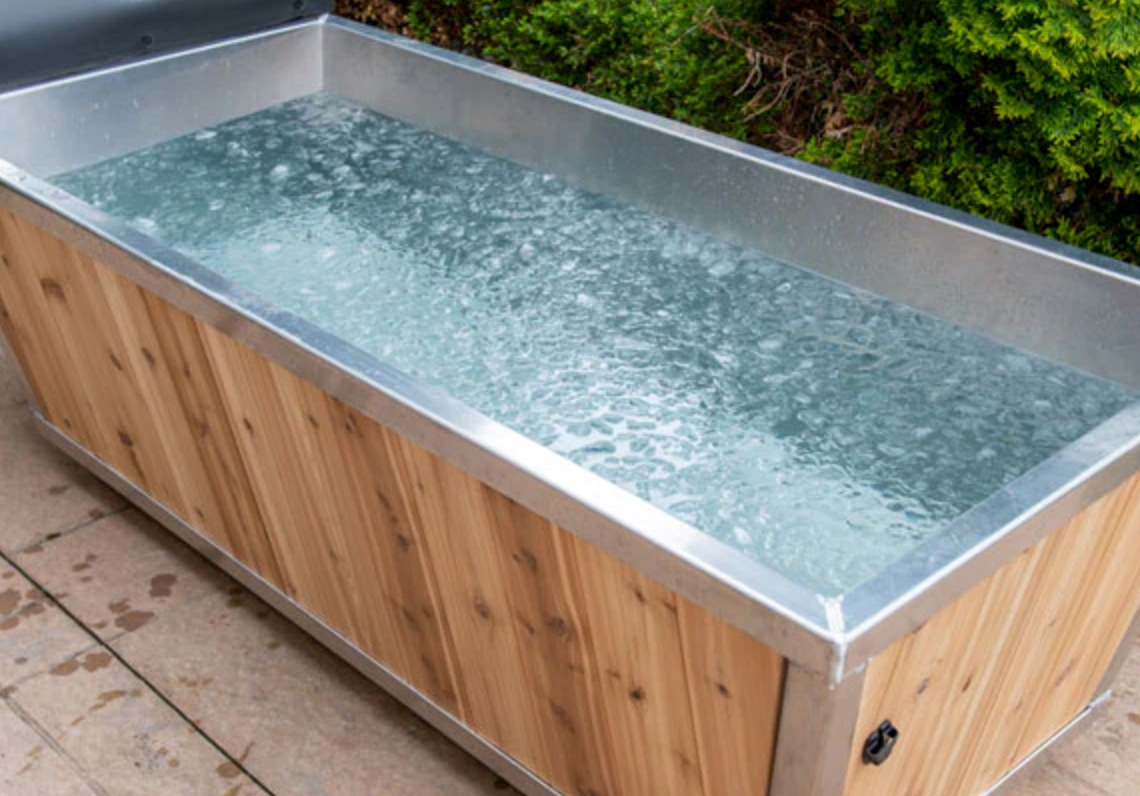







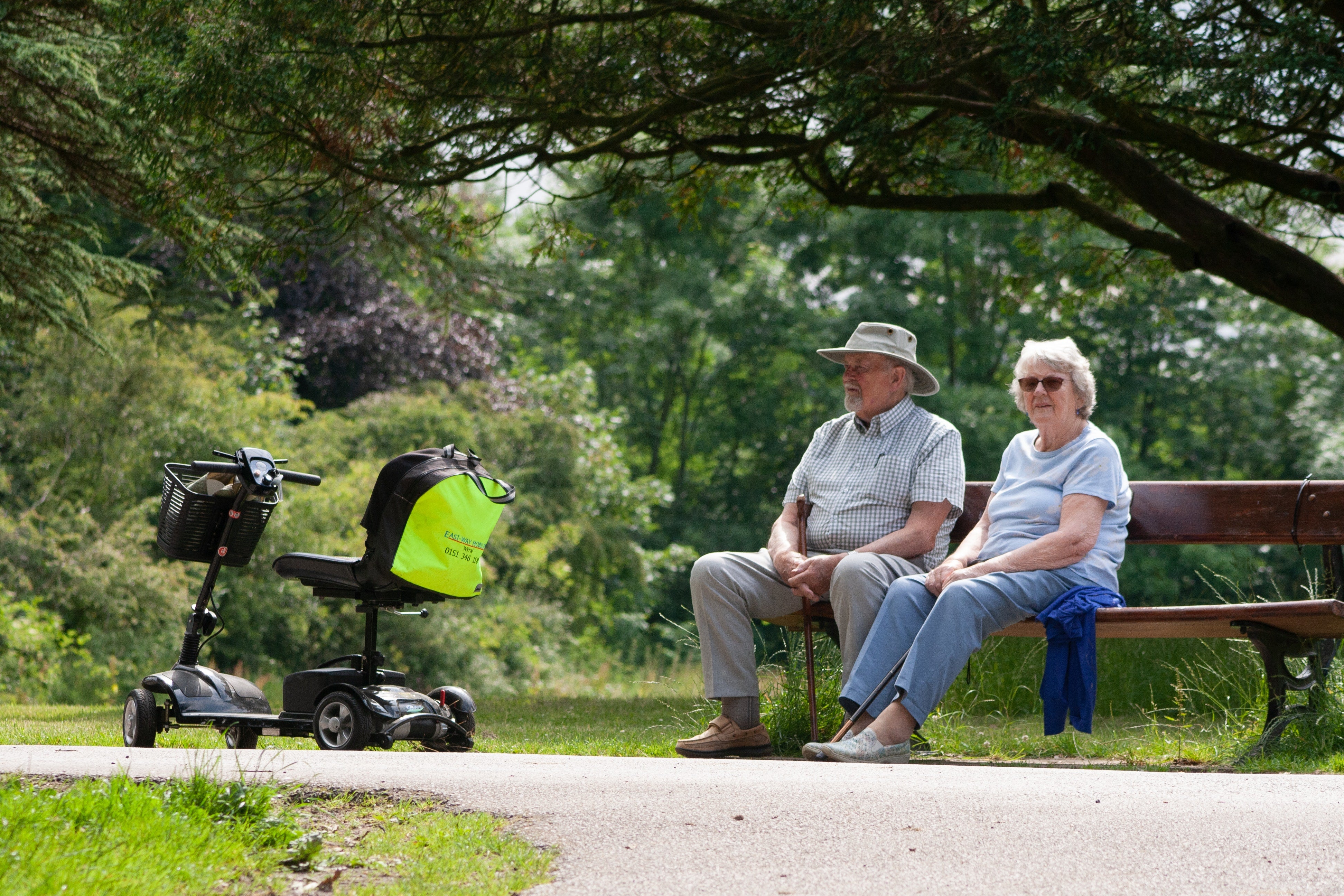

Leave a comment
This site is protected by hCaptcha and the hCaptcha Privacy Policy and Terms of Service apply.